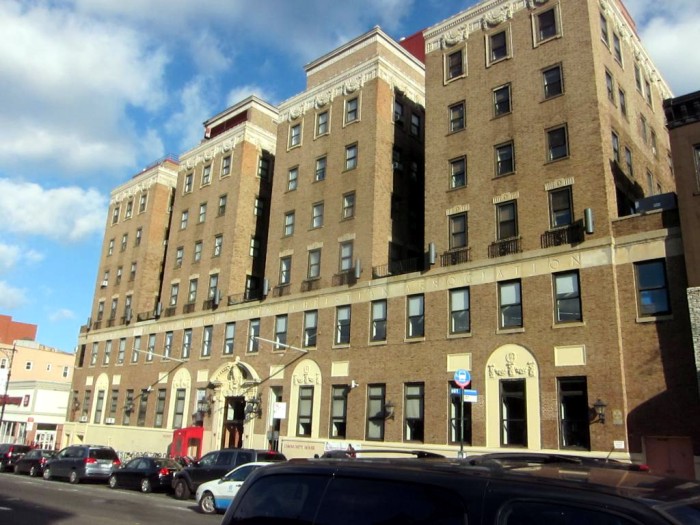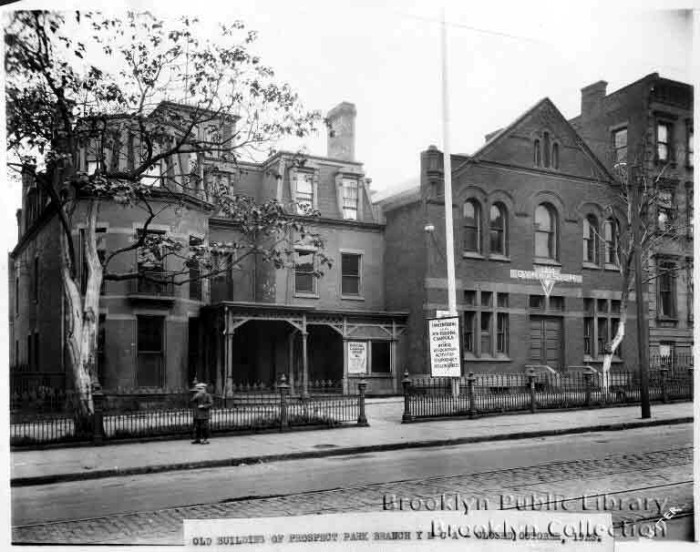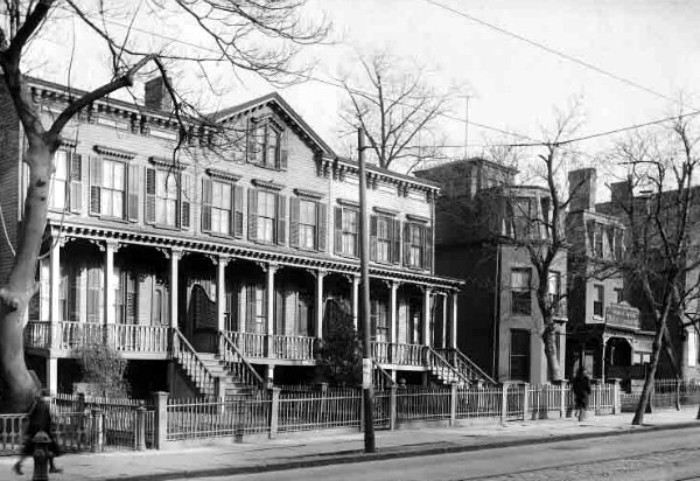Building of the Day: 357 9th Street
Brooklyn, one building at a time. Name: Park Slope YMCA Address: 357 9th Street Cross Streets: 5th and 6th avenues Neighborhood: South Slope Year Built: 1925-27 Architectural Style: Neo-Georgian Architect: Unknown, perhaps Trowbridge & Ackerman Other Buildings by Architect: Hanson Place YMCA Landmarked: No The story: The YMCA of Brooklyn has a long and interesting…


Brooklyn, one building at a time.
Name: Park Slope YMCA
Address: 357 9th Street
Cross Streets: 5th and 6th avenues
Neighborhood: South Slope
Year Built: 1925-27
Architectural Style: Neo-Georgian
Architect: Unknown, perhaps Trowbridge & Ackerman
Other Buildings by Architect: Hanson Place YMCA
Landmarked: No
The story: The YMCA of Brooklyn has a long and interesting history. The Young Men’s Christian Association started in London in 1844, as a religious ministry to young men, especially sailors, of any social class, alone and friendless in the big city. They had a place to meet, engage in Bible Study, and keep off the dangerous streets of London. The idea rapidly spread to other cities and other countries. The first Brooklyn YMCA was established in 1853, and by 1866, they had their own building on Fulton Street, near Gallatin Place. That was too small in no time, and a new building, the first Y to have an indoor pool, was built further down Fulton, near Bond.
More branches soon opened up in Brooklyn. In the Park Slope neighborhood, the organization purchased a mansion at 357 9th Street in 1891, and opened the Park Slope Branch of the Y.M.C.A. Because this was both a religious and recreational facility, there were lecture rooms and an auditorium space, as well as rooms for gymnastics and sports. There was also space to board a few young men. It was the Young Men’s Association, so there were no female members, they had their own Young Women’s Christian Association.
Over the next 20 years, the Park Slope Branch expanded the facilities to an athletic facility next door, but it still wasn’t enough space. The population in Park Slope had exploded, as apartment housing replaced single family homes, and a larger Y was desperately needed. The Trustees starting raising money in the early 1920s, and razed the old buildings in 1923. Back in 1914 they had purchased a group of wood framed houses next door to the mansion, and those were torn down too. The new YMCA building would be able to have 165 feet of frontage on 9th Street.
The new building was in the Neo-Georgian style, and was six stories tall. Try as I might, the name of the architect could not be found, even in articles that gushed about how unique and wonderful the new building was. Architects really don’t get any respect. It may have been Trowbridge and Ackerman, as they were the Manhattan-based firm that designed the new Central Branch on Hanson Street, about ten years before. But there is no back up for that, or for anyone else.
The building was hailed for its unique design and its unique function. YMCAs were still in the business of providing shelter to young men and spiritual guidance, as well as athletic pursuits, so the building reflected that in its design. There were rooms for 260 lodgers, with everything from a tailor’s shop to a barbershop within. There were telephone booths, a soda fountain, an “Adirondack” club room with stuffed animals and birds on the wall, an English style library and a Spanish style dining room.
For athletic pursuits, the Y was equipped with a state of the art swimming pool, enclosed in a tile covered room with arches everywhere. The gymnasium could hold two basketball courts, and had other athletic equipment and a bleacher section for spectator sports. There was also a billiard room, exercise rooms, locker rooms and shower facilities, and a large lounge with a fireplace. A large central desk greeted the men and boys when they entered, and they could be directed from there.
The Prospect Park YMCA was an active participant in amateur Brooklyn sports for many years, playing both other Y’s and other church, college and club leagues. They had some good teams over the years in a number of sports. In addition, they worked closely with community groups in literacy programs, book clubs and dance groups. They sponsored day camp programs and job search training. They also offered affordable housing to sailors, in the grand tradition of the YMCA’s founding mission.
In 2000, the building underwent an $8.5 million renovation. The building was upgraded from top to bottom, inside and out. Many of the old rooms were repurposed to new use, and the lobby was redone. They also built a new Aquatic Center, replacing the old pool with two new pools. The 14th Regiment Armory Athletic Center is also a part of the Prospect Park YMCA. The national organization as a whole opened up to female members long ago, and is now the nation’s favorite family recreation and community organization, with multi-generational programs in many subjects. GMAP
(Photograph: Nicholas Strini for PropertyShark)











What's Your Take? Leave a Comment